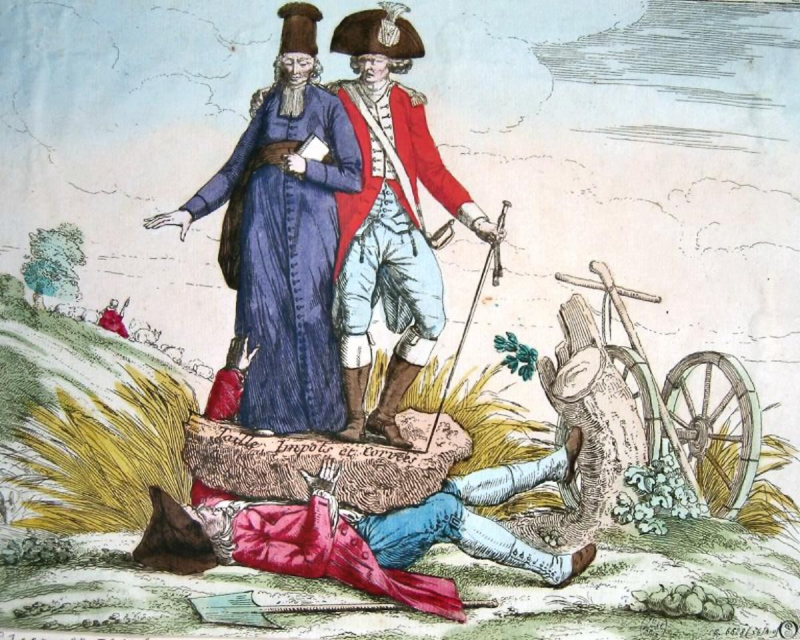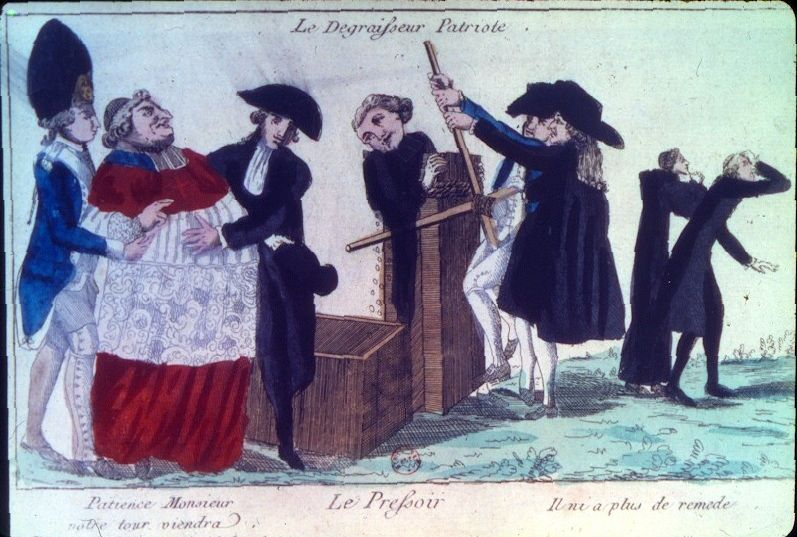Tax Burden on The Third Estate
The aristocrats and clergy were mostly exempt from taxation under the Ancien Régime, whereas the commoners, notably the peasantry, suffered disproportionately high direct taxes.
The clergy, or the First Estate, possessed 10% of the land in France, but accounting for less than 0.5 percent of the population. It was extremely wealthy and did not pay any taxes. It had various benefits, including the ability to collect tithes. Tithes were a levy of one-tenth of annual output or earnings collected for the Church's upkeep. The nobles, or the Second Estate, possessed around a quarter of the land. They were not required to pay taxes and were permitted to collect dues from peasants.
The Third Estate, on the other hand, was required to pay high taxes while the other two were exempt. Peasants paid a land tax to the state (the taille) and a 5% property tax in the decades leading up to the French Revolution. Depending on the taxpayer's status, they all paid a tax based on the number of persons in the family (capitation) (from poor to prince). Peasants owed their landlords cash rent, a payment based on their annual produce, and fees on the use of the nobles' mills, wine presses, and bakeries.
All of this weighed heavily on the Third Estate, prompting them to challenge the unjust Estates System and plot its downfall.












